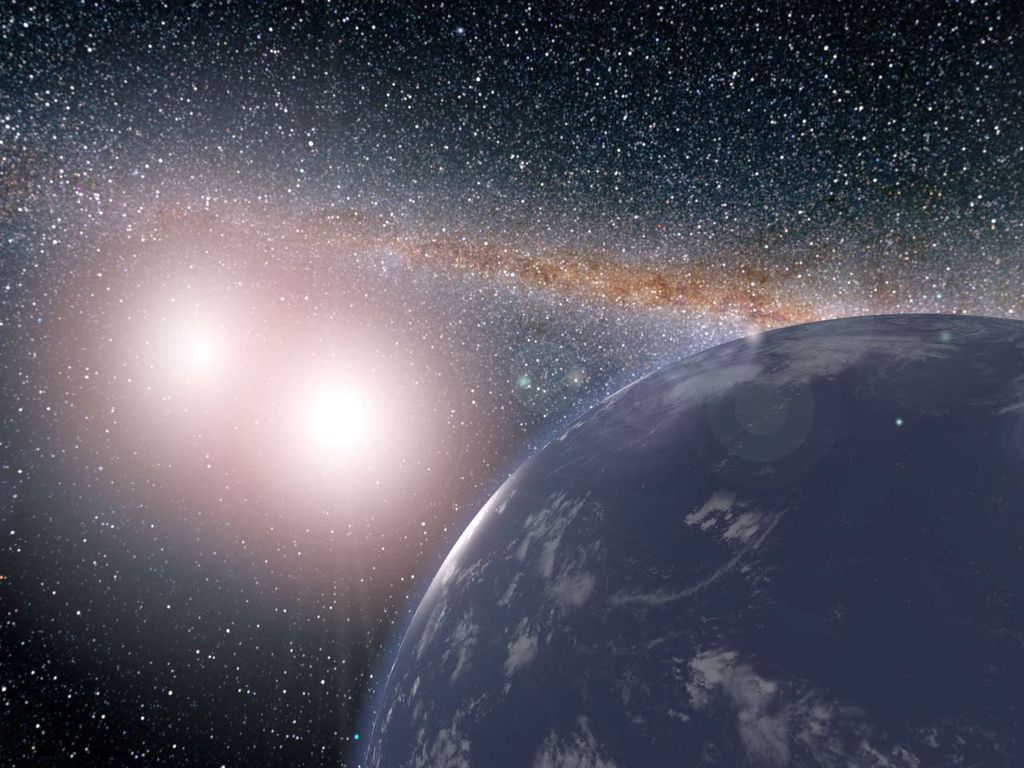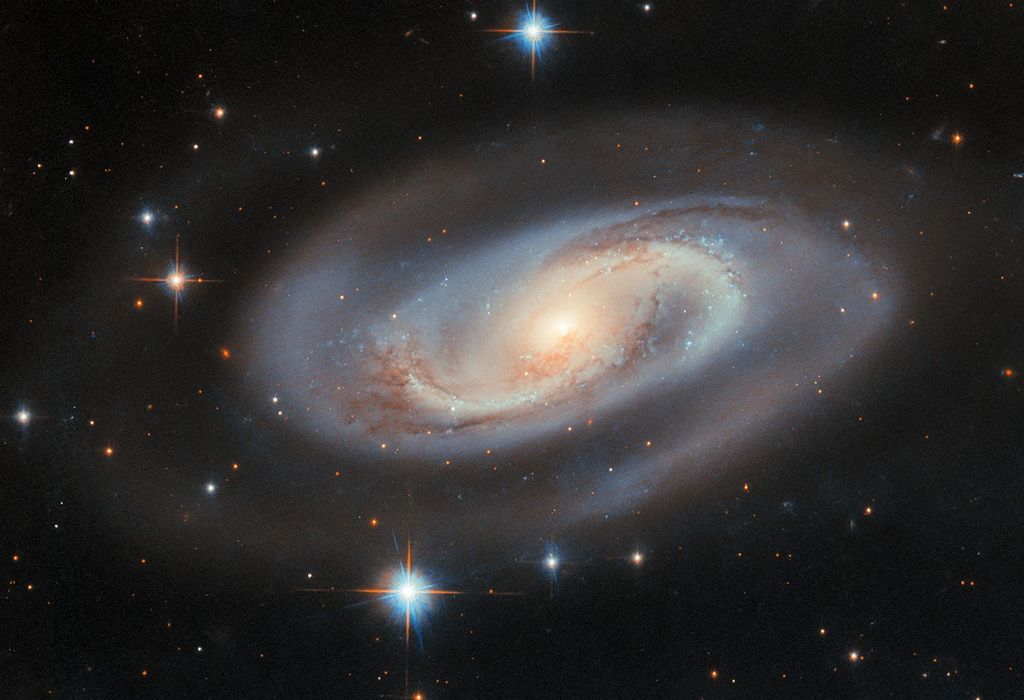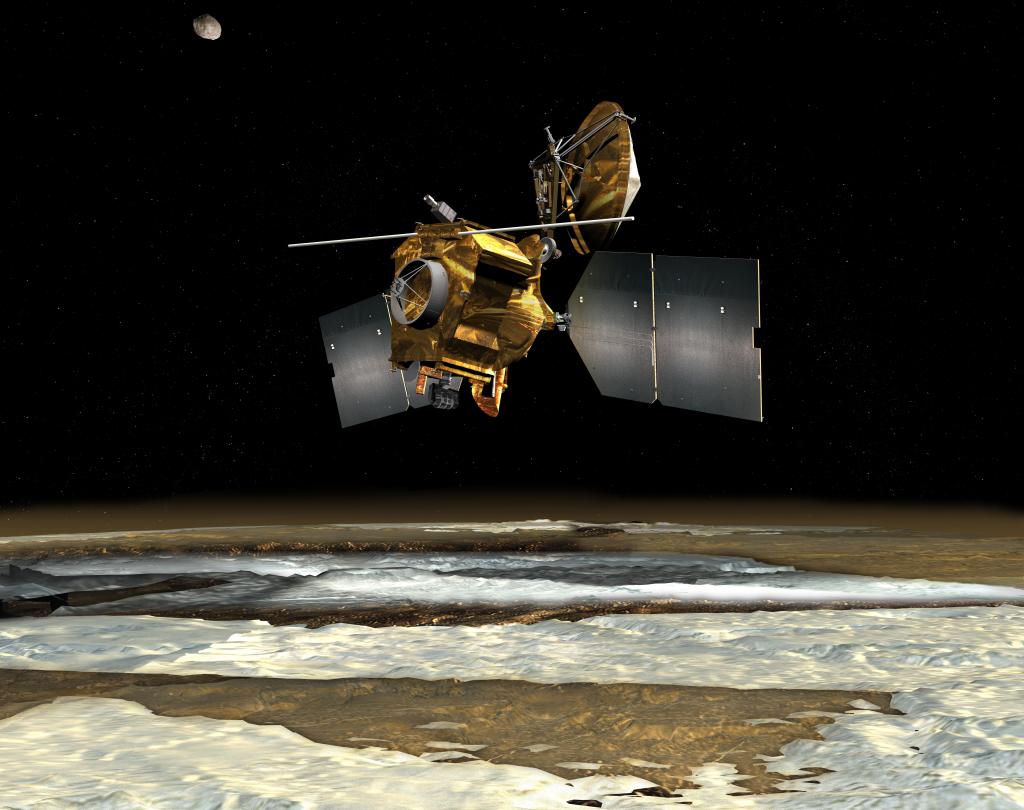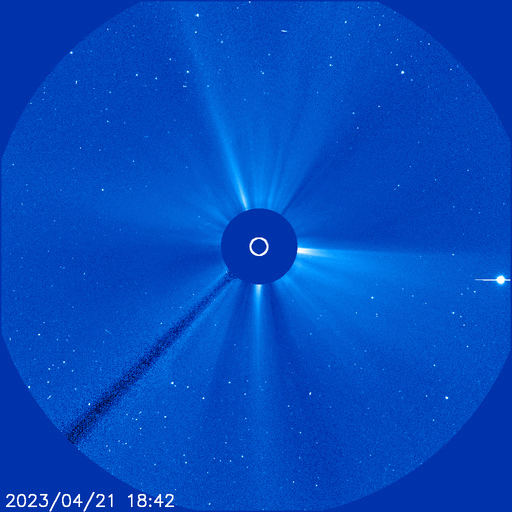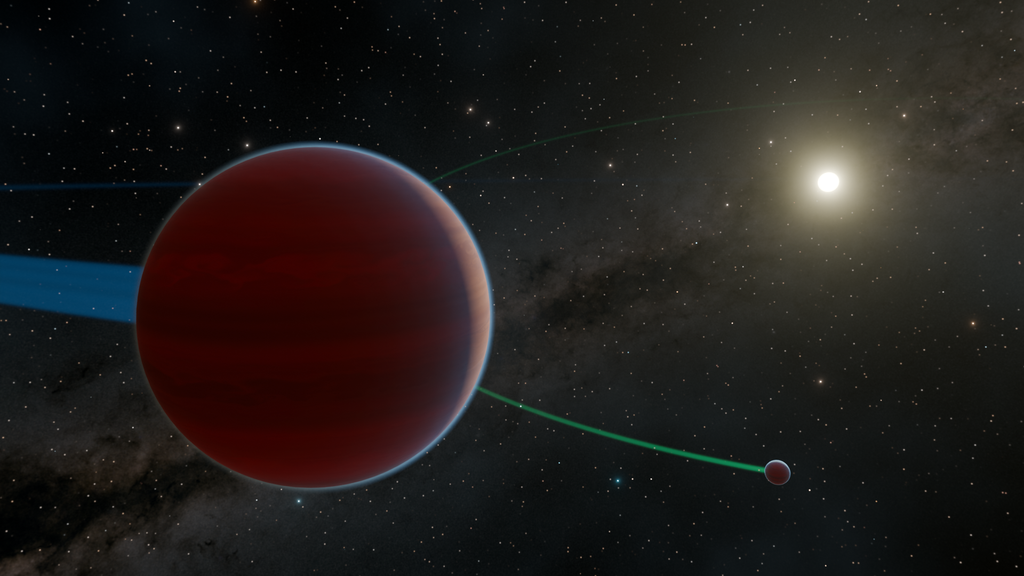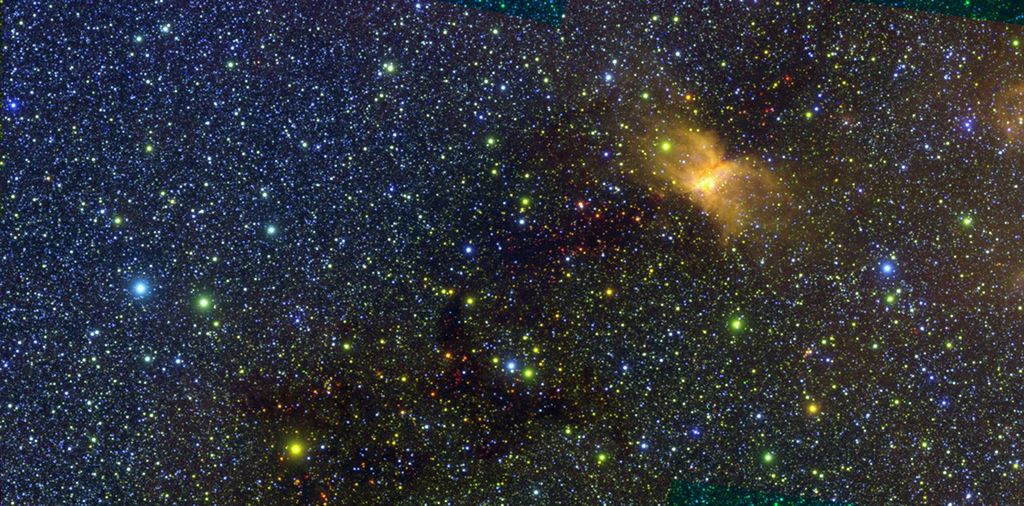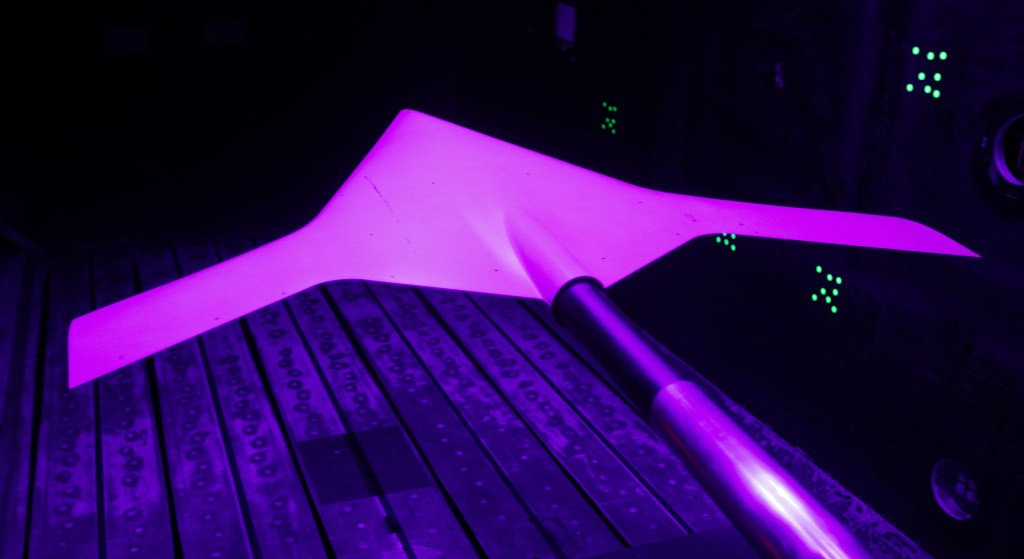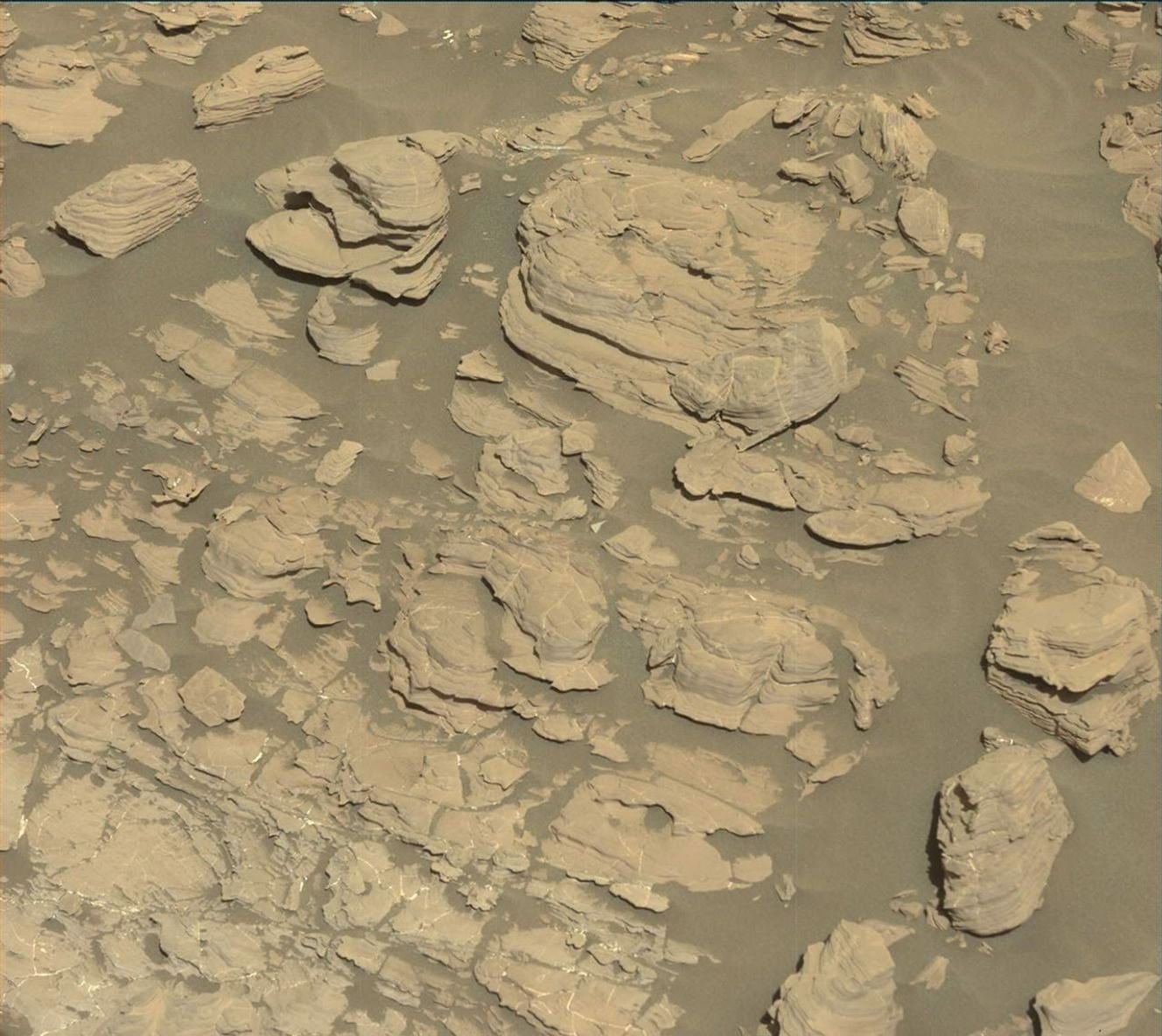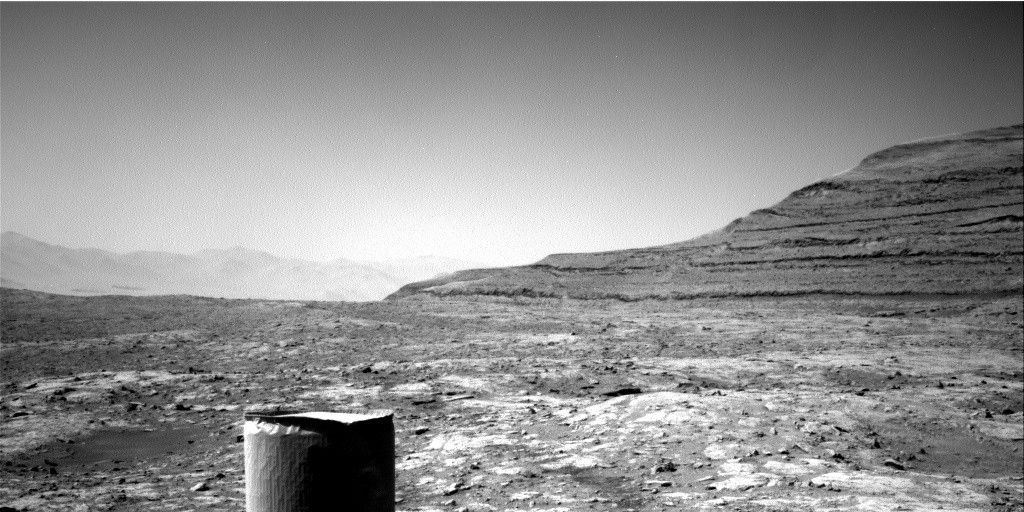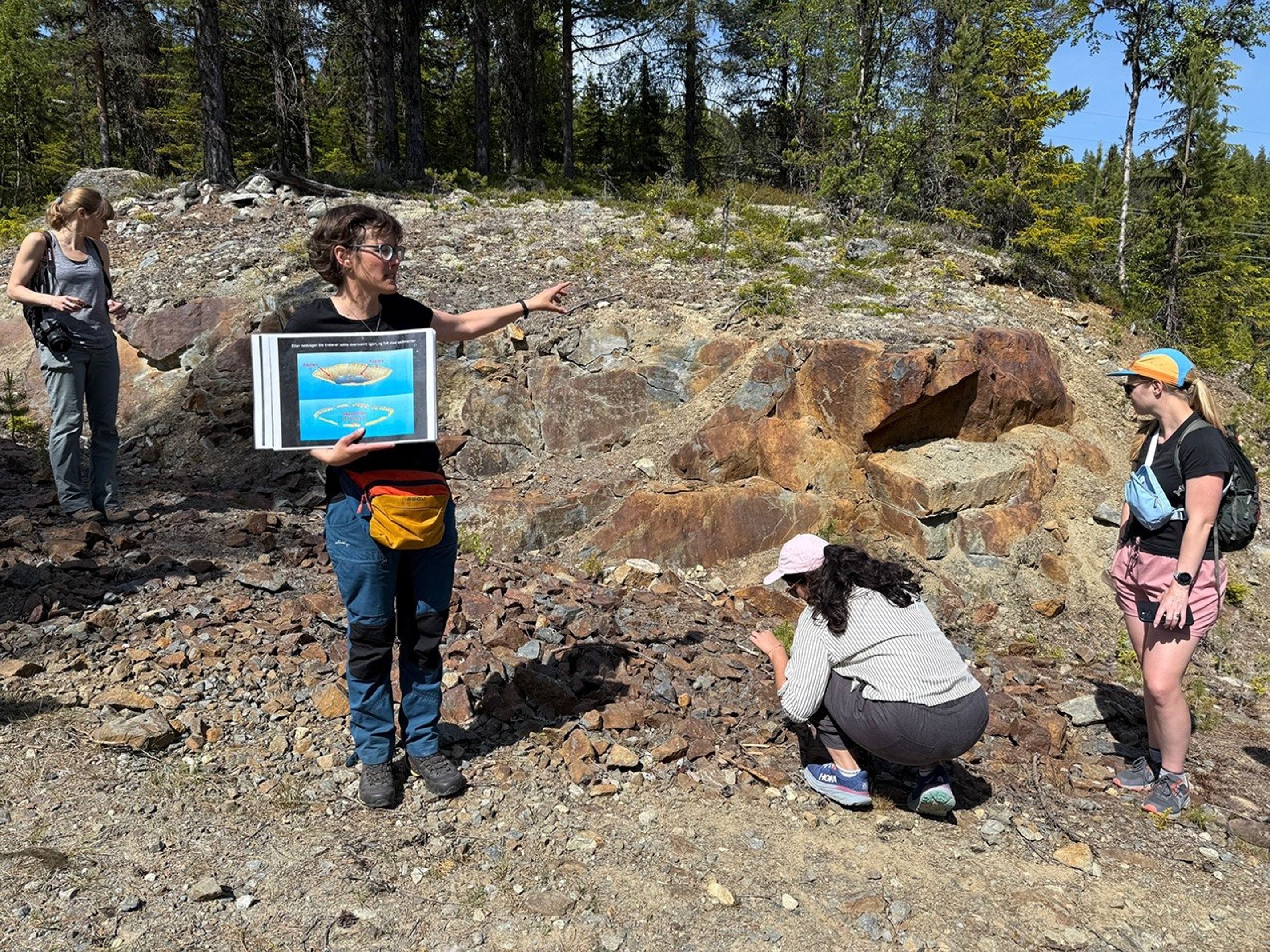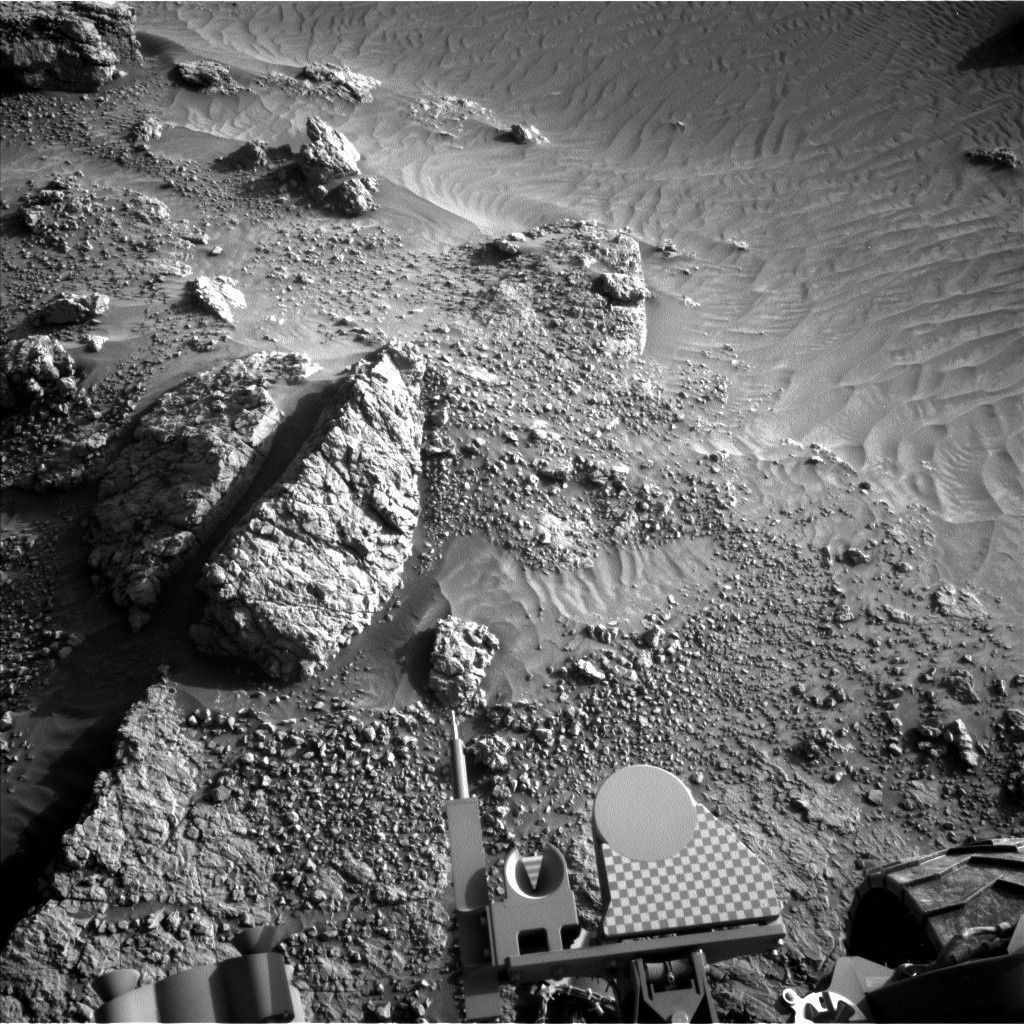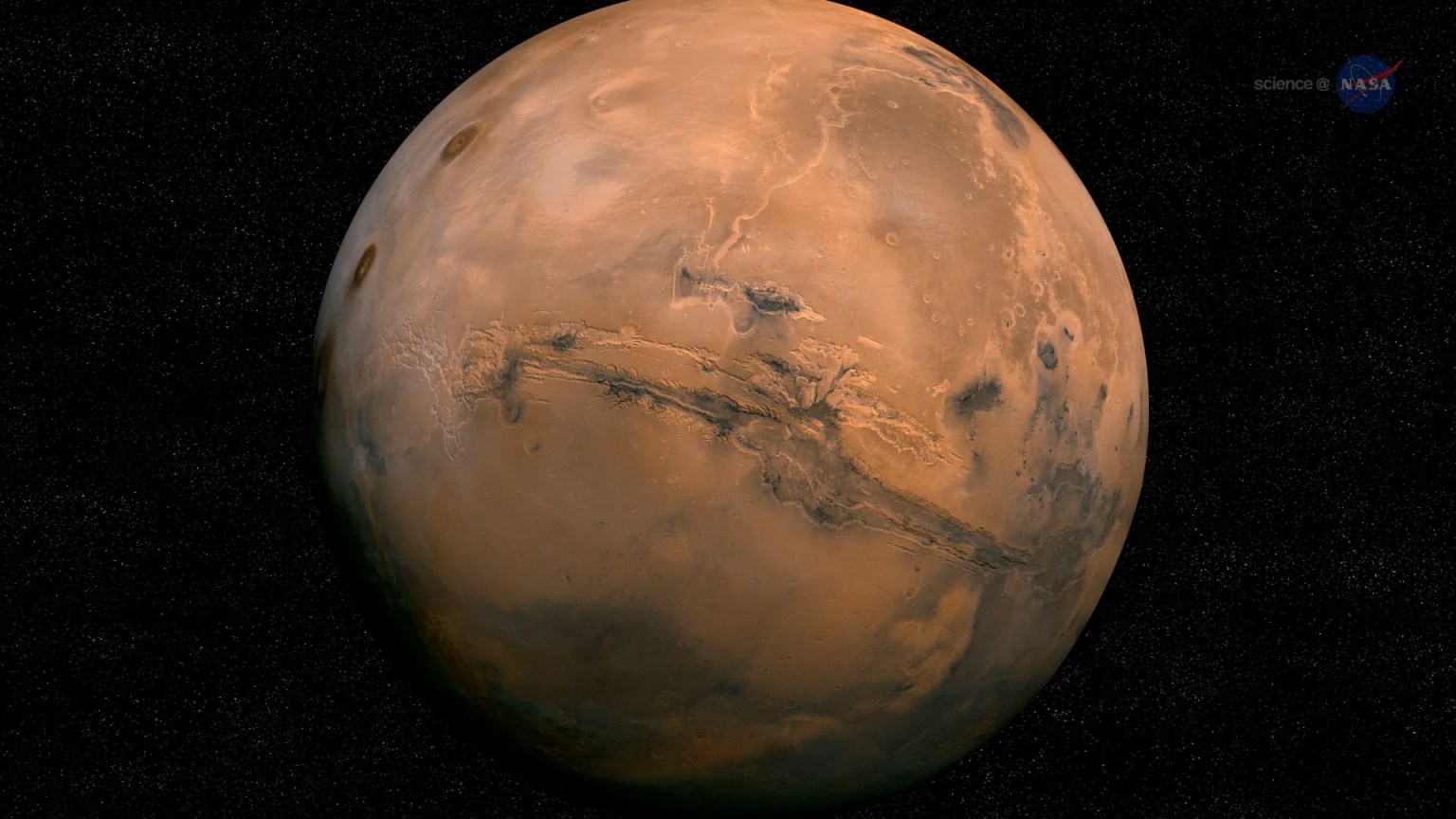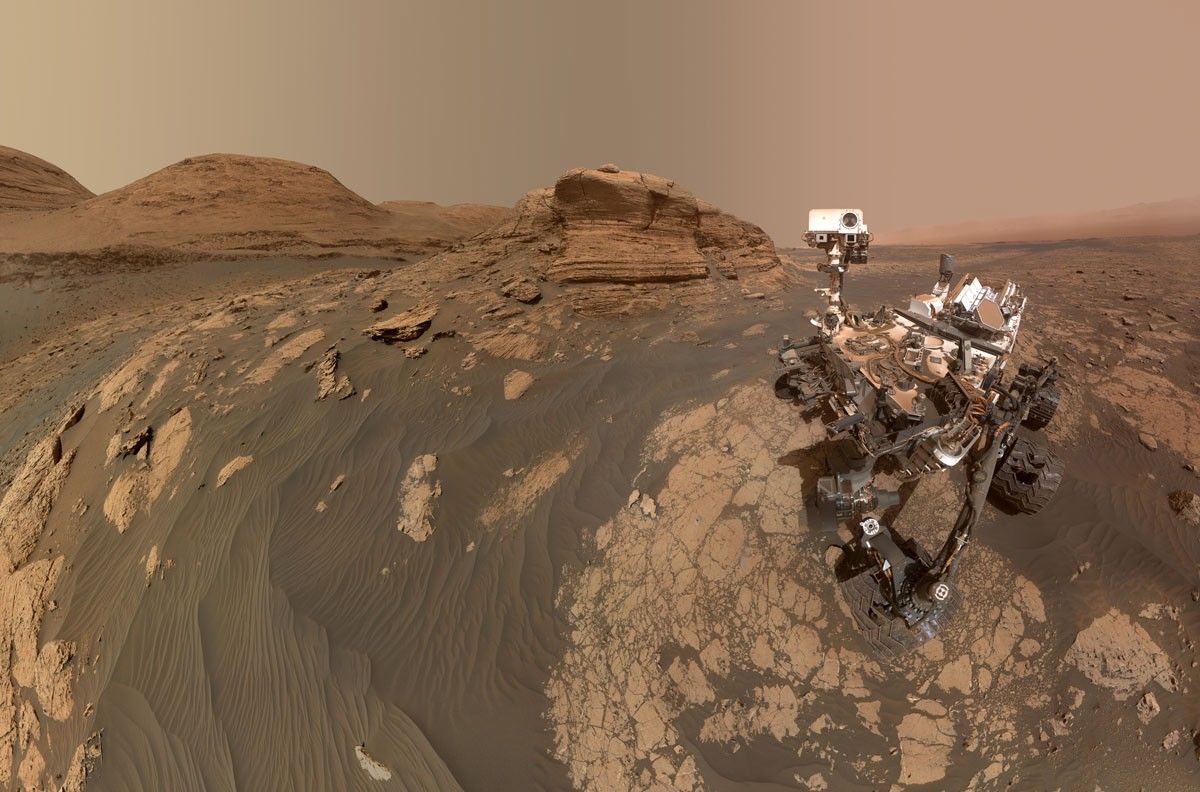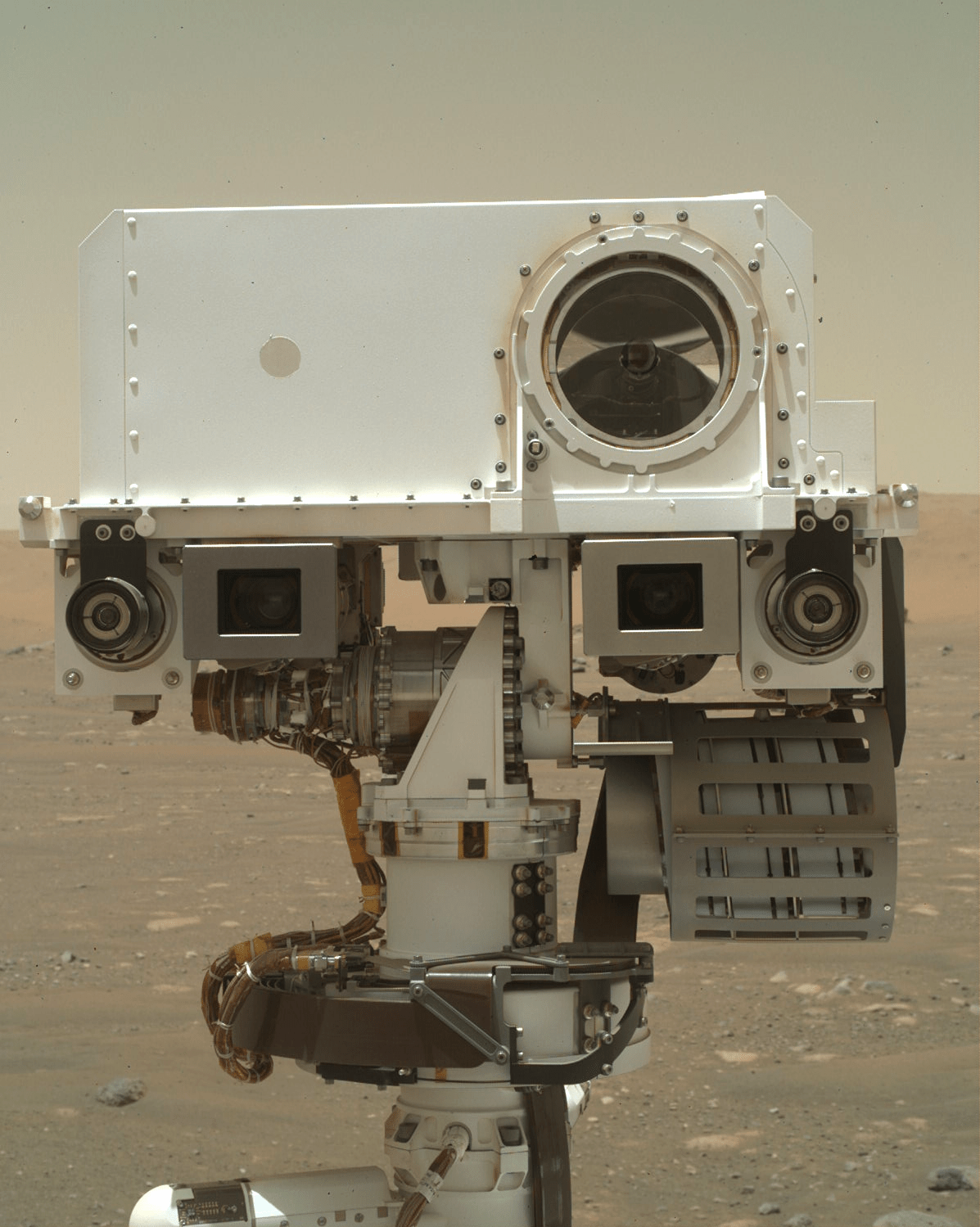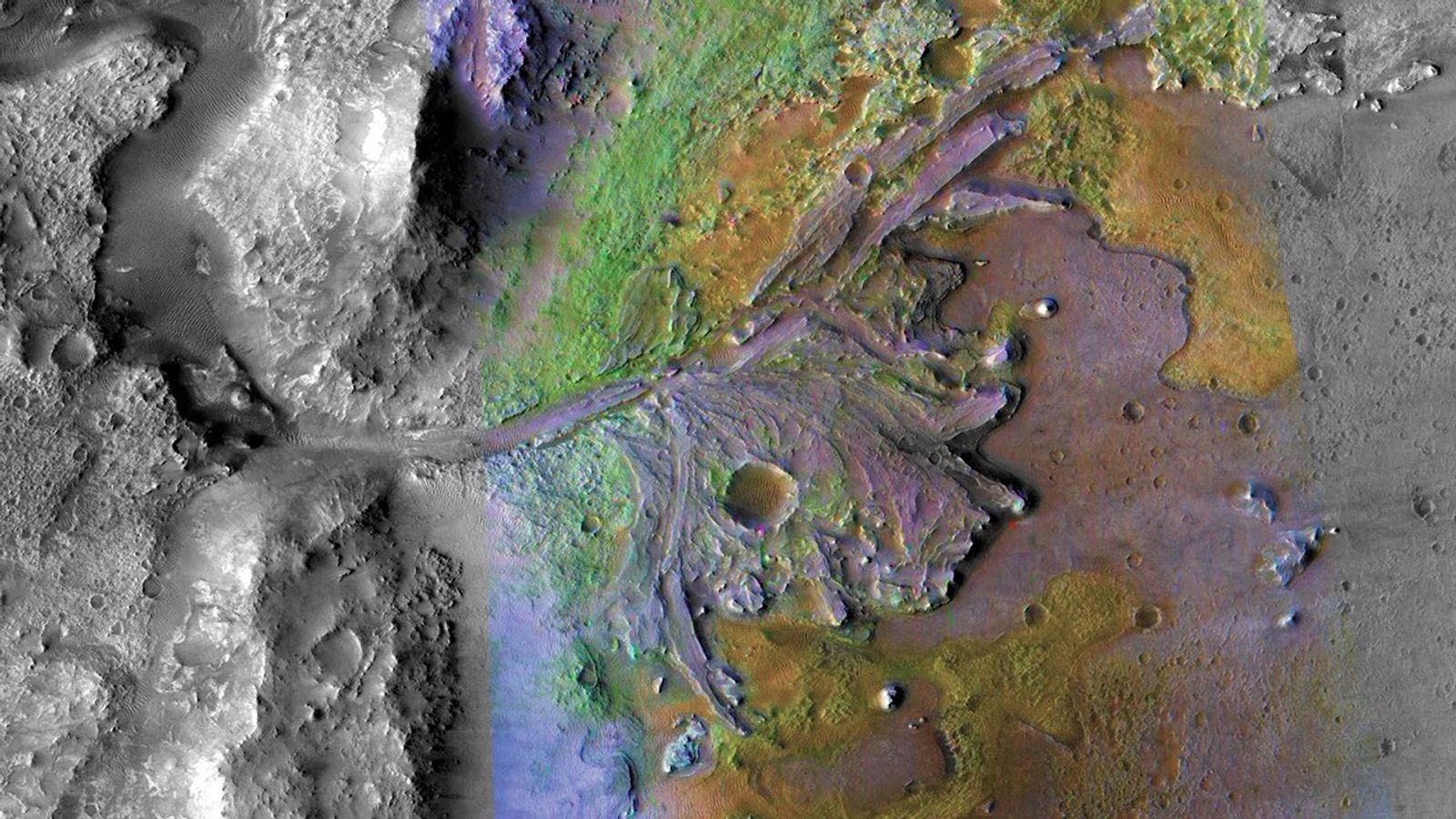Today's image is a color version of part of the workspace image from the Sol 1925-1926 blog, which shows in greater detail the numerous layers and color variations that kept us at this spot for another round of science observations.
Today's image is a color version of part of the workspace image from the Sol 1925-1926 blog, which shows in greater detail the numerous layers and color variations that kept us at this spot for another round of science observations. Exploring more of the steps in our staircase-like workspace was the name of the game today. The MAHLI mosaics acquired on Sol 1925 from the targets "Jura" and "Crinan," near the bottom of the workspace, were intriguing enough to lead ChemCam to analyze both of them with rasters that crossed over multiple layers exposed in these targets. Also near the bottom of the workspace, the target "Craighead," a gray rock cut by criss-crossing sulfate veins, will first be brushed by the Dust Removal Tool (DRT), and then imaged by MAHLI and analyzed by APXS. In between the targets Crinan and "Assynt" (another Sol 1925 target), ChemCam will shoot the target "Brodick" to add to our chemical survey of the outcrop. MAHLI will follow up on a ChemCam target from Sol 1925, "Barra," taking advantage of the dust-removing capability of ChemCam's laser to get a closer, cleaner look at this target near the top of the workspace.
We took a few brief breaks from the rocks in front of us to image and analyze other objects of interest. ChemCam will shoot the sand target "Boreray" to compare its chemistry to those of sands Curiosity has encountered throughout the mission. ChemCam and Mastcam will both image the Peace Vallis fan, far north of us on the Gale crater rim, as our vantage point on top of the "Vera Rubin Ridge" gives us a clear view of it. MAHLI will image the REMS UV sensor to monitor dust accumulation on the zenith-pointing sensor. REMS itself along with RAD will make regular measurements of the environment, and DAN will ping the ground below the rover both before and after we drive to seek signs of subsurface hydrogen. Early morning Navcam and Mastcam observations of clouds and the amount of dust in the atmosphere will complement a similar suite of observations made mid-day on Sol 1925.
On the second sol of the plan, we will drive away to a new patch of bedrock that, at least from orbit, shares characteristics with the bedrock we have spent the past few sols investigating. By comparing what we find there to our recent measurements, we can continue to put together a story for how the Vera Rubin Ridge came to be.
Written by Michelle Minitti, Planetary Geologist at Framework

